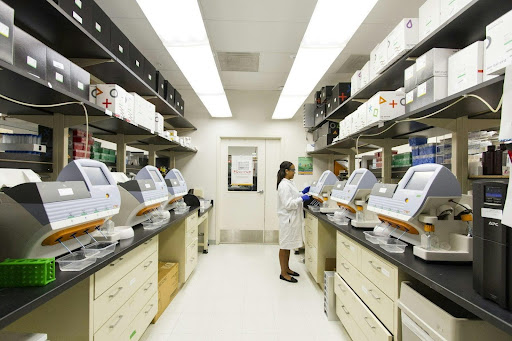Assay miniaturization isn’t just about using smaller plates—it’s a rethink of how we explore chemical and biological space. By shrinking volumes and scaling conditions, teams can screen richer designs, cut reagent costs, and generate data with tighter control and clearer statistics. Here’s how the shift to tiny wells is reshaping discovery.
Smaller volumes, bigger design spaces
When assays move from 96- to 384- or 1,536-well formats, scientists can test full concentration–response curves across more targets, conditions, and time points—often in the same workday. Quantitative high-throughput screening (qHTS) showed why this matters: instead of one point per compound, titration-based screening captures potency and efficacy across the primary pass, reducing false negatives and immediately revealing structure–activity relationships. That approach has been validated on large libraries and is now a staple in many centers.
Miniaturization also unlocks more creative designs—factorials, orthogonal controls, and kinetic variants—because the marginal cost per condition drops. Practical playbooks for designing robust miniaturized assays (signal windows, controls, edge mitigation) are laid out in the NIH/NCATS Assay Guidance Manual (AGM), which has become the community’s go-to for getting small-format assays right.
Quality you can measure (and compare)
Smaller doesn’t mean sloppier—if anything, miniaturization raises the bar on quality metrics. The widely used Z′-factor provides a fast check on assay separation and variability, helping teams decide whether a plate is screen-ready before committing thousands of wells. AGM’s validation chapters explain how to set acceptance criteria and track per-plate statistics as formats shrink and automation increases. And while Z′ is not the only metric in town (and thoughtful critiques exist), it remains a useful gatekeeper when you’re moving quickly through large designs.
Just as important, miniaturization standardizes how results are generated. Automated liquid handlers and readers, combined with protocol versioning, make it easier to get the same performance day after day—so “hit” means the same thing this week and next. For a practical overview of the instruments and their roles across 384/1,536-well formats, AGM’s equipment guide is a solid starting point.
The unglamorous details that make small work
Going tiny magnifies small mistakes. Solvent tolerance is a classic example: DMSO is nearly unavoidable in compound handling, but cell-based assays often tolerate <0.2% DMSO, while many biochemical assays can handle up to ~1%—values that should be confirmed during validation. Evaporation, plate selection, and surface treatments also matter more at nanoliter-to-microliter volumes; choosing the right microplate geometry and color can improve signal-to-background and reduce edge effects. These nuts-and-bolts decisions are the difference between beautiful dose–response curves and noisy data.
To execute reliably at these scales, labs increasingly rely on noncontact dispensing and acoustic/inkjet technologies that deliver precise nanoliter drops without tips. If you’re mapping the landscape or considering whether to adopt or expand miniaturization, the key is to pair the hardware choice with a validation plan that covers liquid classes, plate maps, and plate-level QC—before you push throughput.
From hit-finding to decision-making—faster
The real dividend of miniaturization is cycle time. With titration data in the primary screen, you can triage mechanisms earlier, spot promiscuous scaffolds, and direct follow-ups at the most informative concentrations instead of repeating single-point assays. Statistical models for qHTS datasets handle thousands of curves at once and output potency estimates with quality flags, turning rows and columns into ranked, interpretable hypotheses. That shortens the loop from screening to confirmation, and from there to secondary pharmacology or ADME profiling.
Miniaturized formats also fit naturally with phenotypic and image-based assays. While high-content readouts are data-heavier, small-volume plating and parallel conditions make it practical to run time courses, perturbation series, and rescue experiments that would be prohibitive at larger scales. The throughput frees teams to ask better questions—What concentration window preserves viability while modulating phenotype? Which combinations shape response classes?—instead of settling for a single point and a wish.
A straighter path from lab bench to lead
Shrinking assays tightens the connection between discovery and development. Smaller volumes mean less compound and reagent per decision, which lets chemistry advance parallel SAR lines instead of rationing to one. Standardized plate QC (Z′, CVs, control behavior) makes cross-site comparisons cleaner—critical when academic centers, CROs, and pharma partners share data. And because miniaturized workflows are usually automated from the start, they come with the audit trails (timestamps, instrument settings, plate maps) that downstream teams need for tech transfer and for regulated studies where appropriate.
Looking ahead, the integration is getting tighter: miniaturized biophysical assays (e.g., binding kinetics) and in vivo adaptations of qHTS principles are emerging, creating richer evidence early in the funnel. The more that titration-first thinking spreads, the less time teams spend chasing artifacts from single-concentration screens—and the faster true leads reach medicinal chemistry and pharmacology.
Bottom line
Assay miniaturization expands design space, improves statistical confidence, and compresses time to decision. Pair it with disciplined validation (AGM), robust quality metrics (Z′ and friends), and solvent/plate choices that respect the physics of tiny volumes, and you get discovery that is not only cheaper and faster—but also better. Start small to think big.
